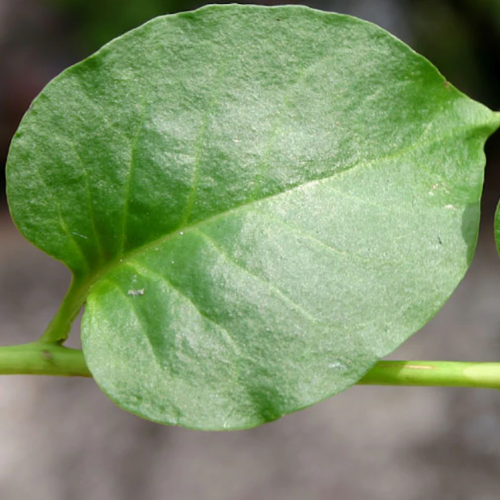Environmental Weed of the Month - Madeira Vine (Anredera cordifolia)
Common names
Madeira Vine, Bridal Wreath, Jalap, Jolop Potato Vine, Lamb's Tail, Potato Vine
Family
Basellaceae
Origin
South America
Description
A vigorous climbing vine with slightly fleshy, heart shaped, leaves (2-15cm long) that alternate their way up the stem.
Stems are green or reddish when young, adopting a more rope-like appearance as they mature and capable of climbing over 30m into the canopy.
Aerial tubers, grey/brown in colour, grow along the length of the vines, normally about 2-3cm in length but sometimes growing in clusters larger than a fist.
Flowers are tiny, white/cream and fragrant.
They appear in late Summer/early Autumn on drooping flower spikes up to 30cm long.

Photo Credit: Trevor James
How do they spread?
Viable seeds aren't often produced however the vine grows thousands of aerial tubers that drop at the slightest disturbance.
There can be up to 1500 fallen aerial tuners per square metre under dense infestation.
These tubers are extremely fragile and can easily be broken into small pieces, all of which are capable of growing and reproducing.
They also spread by tuberous roots and creeping underground stems.
Why are they an issue?
Madeira Vine is an extremely vigorous and invasive species, capable of growing 1m per week.
It will quickly smother entire areas of native forest, creating impenetrable walls that greatly reduce biodiversity and habitat.
Its ability to lie dormant for so many years make it a weed that is not easily beaten and requires years of follow up treatment.
Where are you likely to find it?
Madeira Vine is an extremely vigorous and invasive species, capable of growing 1m per week.
It will quickly smother entire areas of native forest, creating impenetrable walls that greatly reduce biodiversity and habitat.
Its ability to lie dormant for so many years make it a weed that is not easily beaten and requires years of follow up treatment.

Photo Credit: Trevor James
How can I control it?
- Hand pulling and digging of tubers for small or immature infestations. This must be followed up with monitoring and treatment as necessary. All plant material should be bagged with extreme caution and left to rot COMPLETELY. Alternatively, moved with extreme caution to the Waste Management Centre to be HOT composted.
- Scrape and Paint – Mix 2L Glyphosate to 2L of water and add 15g Metsulfuron methyl.
- Over Spray - Mix 50mL Glyphosate and 10L of water and 1.5g Metsulfuron methyl (MM) per 10L to help treat corms and tubers. Dissolve MM in the water before adding Glyphosate. Add surfactant to mix (Pulse®) and agitate/mix well.
FOLLOW UP TREATMENT WILL BE REQUIRED.
